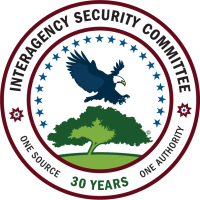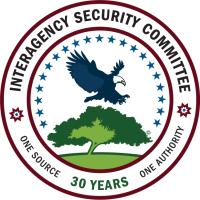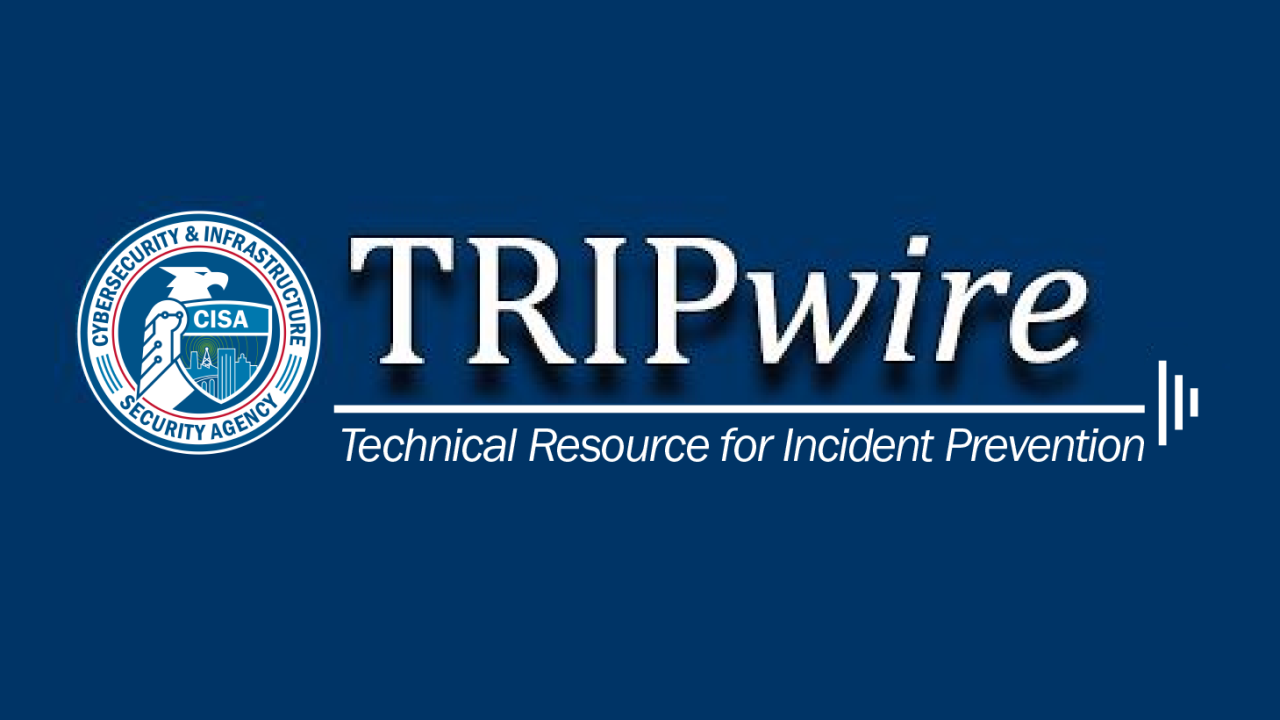Celebrating 30 Years of Securing and Protecting Federal Facilities

On April 19, 1995, a rental truck exploded in front of the Alfred P. Murrah Federal Building in Oklahoma City. The explosion blew off the building’s entire north wall and resulted in a death toll of 168 people. This event was the deadliest act of domestic terrorism in U.S. history.
Following the tragic bombing, the Interagency Security Committee was formed on October 19, 1995, under an executive order by the President, to address and protect government-wide security for civilian federal facilities in the United States. Since then, the Committee has established numerous policies and standards which are reinforced by training courses, required compliance and reporting, and annual meetings.
The Interagency Security Committee is made up of 24 primary and 42 associate members. Membership consists of senior level executives across 66 federal departments and agencies. In November 2023, the President signed Executive Order 14111 to reinforce the importance of, and strengthen, the security of Executive Branch federal facilities in the face of persistent and emerging threats.
2025 recognizes 30 years of the Interagency Security Committee’s establishment and efforts in enhancing the quality and effectiveness of security in and protection of federal buildings and facilities in the United States.
About the ISC
The ISC collaboratively establishes policies, monitors compliance, and enhances the security and protection of federal facilities.
Federal facilities, the people who work at them, and those that visit are safe and secure throughout the country.
The ISC is chaired by the Department of Homeland Security or its designee and consists of a permanent body with representatives from 66 federal departments and agencies. Today, CISA Chairs and is the Secretariat for the ISC.
The ISC consists of 24 primary members designated by EO 14111 and, to date, 42 associate members that have subsequently petitioned to join. The ISC provides coordinated interagency solutions to problems, which cannot be solved by individual departments and agencies alone.
ISC subcommittees identify long- and short-term priorities and oversee strategic initiatives. Current subcommittees include the following:
- Compliance Subcommittee: Ensure compliance with established standards and oversee the implementation of appropriate security measures in federal facilities.
- Countermeasures Subcommittee: Oversees the development of security criteria, degree of applicability, and associated countermeasures necessary to match the undesirable events as identified in the Design-Basis Threat (DBT) report.
- Design-Basis Threat Subcommittee: Provides annual updates to the Design-Basis Threat (DBT) report.
- Standards Subcommittee: The focal point for coordination of all ISC standards.
Working groups produce the ISC’s standards and best practices. Working groups are task-based and address a wide range of current and potential risks.
News and Events
- April 19, 2025: Visit the Oklahoma City National Memorial and Museum website for their remembrance ceremony which will be streamed starting at 9 a.m. CDT.
- April 7, 2025: The ISC attended the U.S. Capitol Survivor Tree Dedication Ceremony to honor the lives lost 30 years ago in the Alfred P. Murrah Federal Building bombing in Oklahoma City. The Survivor Tree is a symbol of resilience, hope, and guidance.
- April 1, 2025: The Oklahoma City National Memorial Museum unveiled a new exhibit titled, “Are We Safer Today?” This exhibit explores the layers of security that make the United States more prepared and resilient today, including the work of the Interagency Security Committee.
Interagency Security Committee Policies and Standards
The Risk Management Process for Federal Facilities
Defines the criteria and processes facility security professionals should use in determining a facility's security level. This standard provides an integrated, single source of physical security countermeasures and guidance on count.
Items Prohibited in Federal Facilities
Establishes a process for detailing control of prohibited items into federal facilities and that identifies responsibilities for denying entry to those who attempt to enter with such items.
Planning and Response to an Active Shooter Guide
Guidance for Executive Branch federal departments and agencies on how to plan for and respond to active shooter incidents.
Interagency Security Committee Compliance Policy and Compliance Benchmarks
Guides security planners in assessing the degree to which organizations and facilities have implemented ISC Policies and Standards.
ISC’s 30th Anniversary Logo Represents its Historical Roots

The ISC’s 30th Anniversary logo has layers of meaning representative of the ISC and its mission.
The 21 stars represent the ISC’s roots. In 1995, six months after the Oklahoma City bombing, the President signed an Executive Order (EO) establishing the ISC. The EO designated 21 departments and agencies to participate on the ISC. Since 1995, the ISC has grown to include 24 Primary Members and 42 Associate Members. Today, the ISC does everything by, with, and through its members.
The Oklahoma City National Memorial Museum has been a longstanding partner and supporter of the ISC. The Survivor Tree was included to both honor this partnership and bring attention to the Survivor Tree’s message of resilience. The Survivor Tree is an American elm tree in the heart of downtown Oklahoma City that survived the bomb’s blast and witnessed one of the worst terrorist attacks on American soil. The ISC works every day to make our federal facilities better protected and more resilient.
The forward-facing eagle flying over the Survivor Tree represents the ISC’s commitment to continuing to secure federal facilities in the face of both persistent and emerging threats. The ISC will never stop striving to enhance the quality and effectiveness of securing and protecting federal facilities, the people who work at them, and those that visit them.
While serving on the ISC working group that developed the Risk Management Process, I was impressed with the high level of expertise and talent within the ISC membership and how members were so willing to share their knowledge for the greater good.
The mission of the ISC is to collaboratively establish polices, monitor compliance, and enhance the security and protection of federal facilities. The ISC provides coordinated interagency solutions to problems, which individual departments and agencies cannot solve alone.
The Oklahoma City bombing signified the need for a comprehensive and collaborative approach to safeguarding our federal facilities and the people who work and visit them. Today, CISA operates at the center of a collective defense strategy prioritizing collaboration and partnership across sectors.
The bombing on April 19, 1995 highlighted significant vulnerabilities in the security of federal buildings. The government realized there was a need to implement new security standards and install controls to protect against similar attacks.
Federal Facility Security Resources
Publications
ISC publications serve as the foundation to the ISC’s work and provide a roadmap for protecting federal facilities.
Training
Builds capability for individuals and organizations to implement ISC policies, standards, and recommendations.
Compliance
Influences departments and agencies to follow ISC policies and standards through reporting, assistance, and verification.
Regional Advisors
Provide local advisement and resources to address ISC-related questions and concerns.

TRIPwire
To access more ISC resources, visit the Technical Resource for Incident Prevention (TRIPwire). TRIPwire is an online, collaborative information-sharing and resource portal designed to help prevent improvised explosive device incidents.
Contact
Interagency Security Committee
Department of Homeland Security
Washington, D.C. 20528
Attn: Interagency Security Committee




